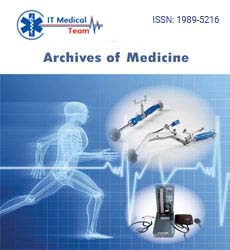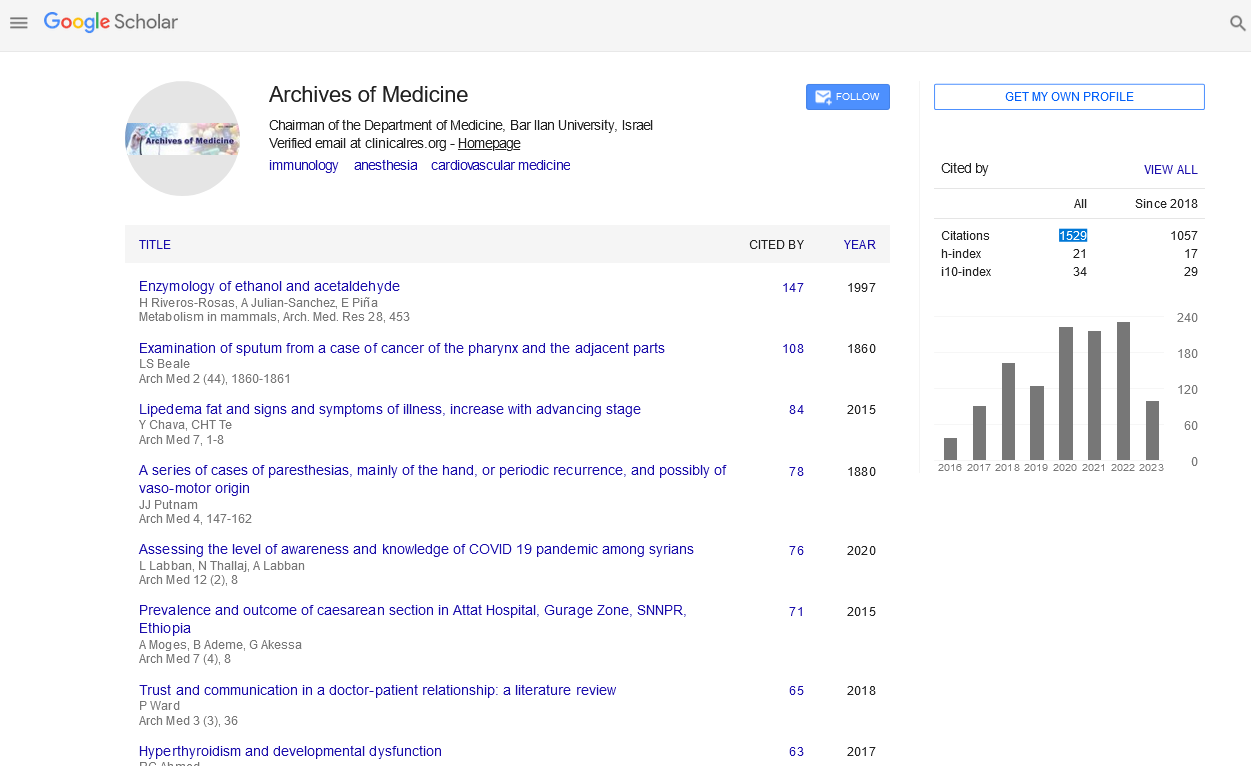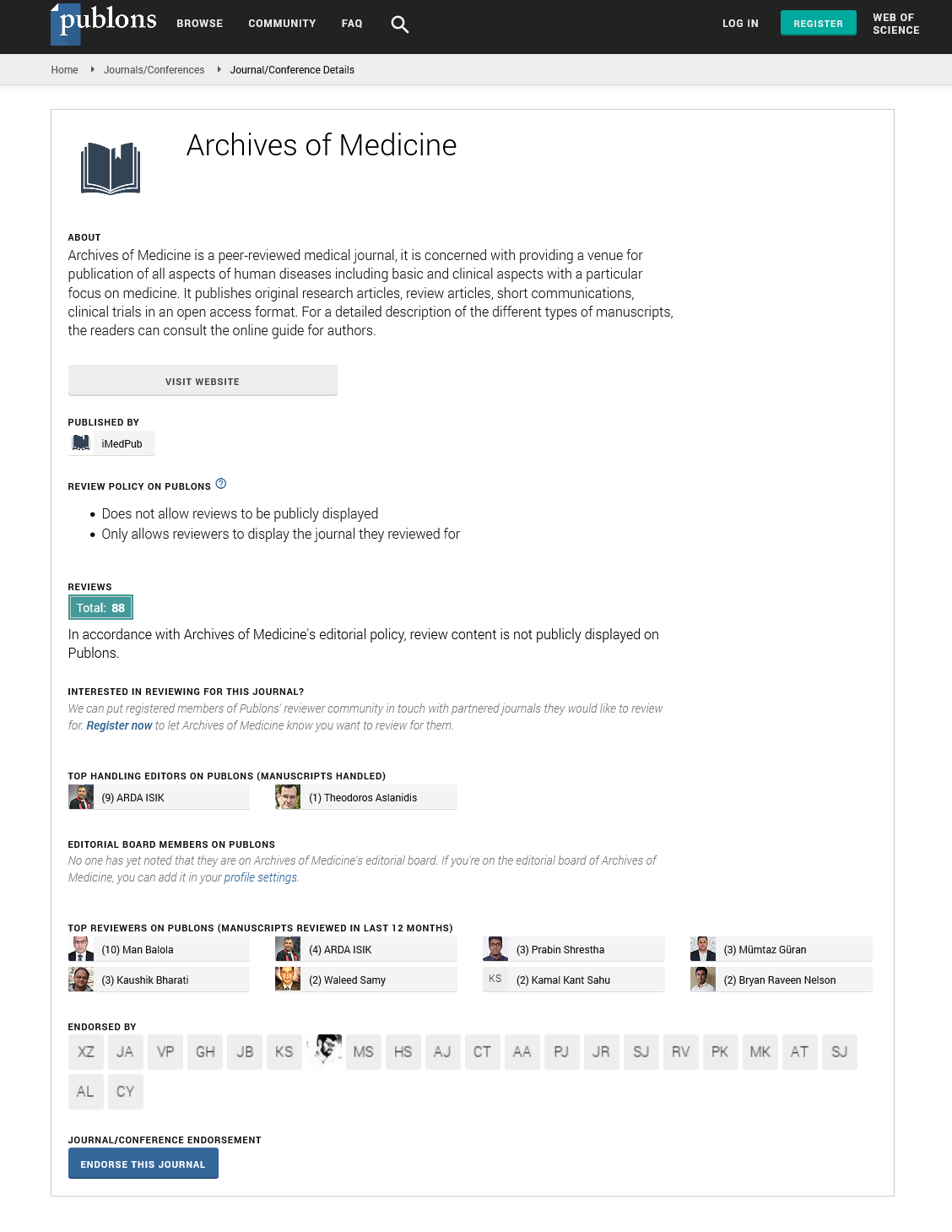Opinion - (2025) Volume 17, Issue 1
The role of the microbiome in allergic rhinitis: A new frontier in treatment
Samuel Mbatha*
1Department of Microbiology and Immunology,, University of Cape Town, Cape Town, Western Cape, South Africa
*Correspondence:
Samuel Mbatha, Department of Microbiology and Immunology,, University of Cape Town, Cape Town, Western Cape,
South Africa,
Email:
Received: 03-Jan-2025, Manuscript No. ipaom-24-15469;
Editor assigned: 06-Jan-2025, Pre QC No. P-15469;
Reviewed: 17-Jan-2025, QC No. Q-15469;
Revised: 22-Jan-2025, Manuscript No. R-15469;
Published:
29-Jan-2025
INTRODUCTION
Allergic rhinitis, a common condition characterized by symptoms such as nasal congestion, sneezing, itching, and a runny nose, affects millions of people worldwide. Often triggered by environmental allergens like pollen, dust mites, or pet dander, it is considered an immune-mediated disorder in which the body overreacts to substances that are typically harmless. The pathophysiology of allergic rhinitis has traditionally been linked to an exaggerated immune response, mediated by Immunoglobulin E (IgE), mast cells, and inflammatory cytokines. For many years, treatment options for allergic rhinitis have focused on managing symptoms through antihistamines, corticosteroids, and allergen immunotherapy. While these therapies are effective for some patients, a large number continue to suffer from persistent and difficult-to-control symptoms. This has driven researchers to explore new avenues for treatment, leading to the discovery of the microbiomeâ??s crucial role in immune regulation and allergic diseases. The human microbiome, a diverse ecosystem of microorganisms that inhabit various parts of the body, including the nasal passages and gut, has been identified as a key player in modulating immune function. Recent studies have highlighted the connection between microbiome imbalances, or dysbiosis, and the development of allergic diseases, including allergic rhinitis. Understanding how the microbiome influences allergic rhinitis opens up exciting new possibilities for more targeted and personalized treatments that go beyond symptom management, addressing the root causes of immune dysregulation and inflammation [1].
DESCRIPTION
Emerging evidence highlights the critical role of the microbiome in regulating immune responses and maintaining overall respiratory and gastrointestinal health, particularly in the context of allergic rhinitis. The nasal and gut microbiomes, in particular, are intricately linked to immune system function, with significant implications for allergic diseases. Research has shown that individuals with allergic rhinitis often exhibit altered microbial compositions, characterized by reduced diversity and an imbalance favoring pro-inflammatory bacterial species. This phenomenon, known as dysbiosis, disrupts the delicate balance of microbial communities, potentially exacerbating immune dysregulation. The presence of fewer beneficial microbes and an overgrowth of harmful species may amplify immune system sensitivity to allergens, leading to the chronic inflammation seen in allergic rhinitis. These findings suggest that the microbiome may be a critical factor in both the development and progression of the condition. One of the key mechanisms through which the microbiome influences allergic rhinitis is its ability to modulate immune cell activity. Beneficial microbes produce metabolites such as Short-chain Fatty Acids (SCFAs), which play an essential role in maintaining immune homeostasis. SCFAs regulate the activity of T-regulatory cells, a subset of immune cells that suppress inflammatory responses and promote immune tolerance to harmless allergens. In individuals with a healthy microbiome, this mechanism helps prevent excessive immune activation in response to environmental triggers. However, in individuals with allergic rhinitis, dysbiosis can impair SCFA production, leading to a breakdown in immune regulation and heightened sensitivity to allergens. Additionally, dysbiosis may influence the production of Immunoglobulin E (IgE), a key antibody involved in allergic reactions, further contributing to the overactive immune responses that define allergic rhinitis [2,3].
The nasal microbiome, while less studied than the gut microbiome, has emerged as a critical area of interest in understanding allergic rhinitis. The upper respiratory tract is directly exposed to inhaled allergens, and its microbial ecosystem plays a significant role in shaping local immune responses. Studies have identified specific microbial profiles associated with allergic rhinitis, with an overrepresentation of certain pro-inflammatory species and a corresponding decrease in beneficial bacteria such as Lactobacillus and Bifidobacterium. These imbalances may create an environment conducive to chronic inflammation, aggravating the symptoms of allergic rhinitis. Restoring microbial balance in the nasal passages is a promising area of research, with potential implications for reducing inflammation and improving symptom control. Emerging therapies that target the nasal microbiome, such as microbial transplantation and bacteriotherapy, are under investigation and may offer new avenues for managing allergic rhinitis. Advances in microbiome research have also fueled interest in microbiome-targeted therapies, including probiotics, prebiotics, and synbiotics, as novel treatment approaches for allergic rhinitis. Probiotics, which introduce beneficial live microorganisms into the gut, have shown promise in modulating immune responses and reducing allergy symptoms. Certain probiotic strains, such as Lactobacillus rhamnosus and Bifidobacterium lactis, have been associated with reduced nasal congestion, sneezing, and itching in clinical trials. Prebiotics, which act as food for beneficial microbes, can further enhance the growth of protective bacteria and restore microbial diversity. Synbiotics, which combine probiotics and prebiotics, offer a synergistic approach to improving microbial health. Beyond dietary interventions, future therapies may focus on directly modifying the nasal microbiome, potentially offering more localized and effective solutions for allergic rhinitis. These innovative approaches highlight the potential of microbiome-targeted treatments to transform the management of allergic rhinitis and address the limitations of current therapies [4,5].
CONCLUSION
The role of the microbiome in allergic rhinitis is a rapidly developing area of research that offers exciting possibilities for more effective, long-lasting treatments. By understanding the intricate relationship between microbial communities and immune responses, researchers are uncovering new insights into the underlying mechanisms of allergic rhinitis. Dysbiosis, or microbial imbalance, has been identified as a critical factor in the development and exacerbation of the condition, shedding light on why traditional treatments sometimes fail for patients with severe symptoms. With advances in microbiome research, we are now exploring the potential of therapies that target and restore the microbial balance, offering a more personalized and holistic approach to managing allergic rhinitis. While there is still much to learn, the future of allergic rhinitis treatment looks promising, with microbiome-targeted interventions poised to become an integral part of clinical practice. These therapies not only have the potential to alleviate symptoms but may also address the root causes of immune dysregulation, ultimately improving the quality of life for individuals affected by allergic rhinitis. As research in this field continues to progress, it is likely that we will see a paradigm shift in the way allergic rhinitis is treated, moving toward solutions that focus on the balance of the microbiome and the immune system.
Acknowledgment
None.
Conflict Of Interest
None.
REFERENCES
- Peer A, Samuelson DR. The Role of the Microbiome in Allergy, Asthma, and Occupational Lung Disease. Curr Allergy Asthma Rep. 2024 21:1-9.
Google Scholar Cross Ref Indexed at
- Watts AM, West NP, Zhang P, et al. The gut microbiome of adults with allergic rhinitis is characterised by reduced diversity and an altered abundance of key microbial taxa compared to controls. Int Arch Allergy Immunol. 2021 12;182(2):94-105.
Google Scholar Cross Ref Indexed at
- Li J, Fang F, Mei M, Wu D. The gut microbiome and allergic rhinitis; refocusing on the role of probiotics as a treatment option. Eur Arch Otorhinolaryngol. 2023;280(2):511-517.
Google Scholar Cross Ref Indexed at
- Aguilera AC, Dagher IA, Kloepfer KM. Role of the microbiome in allergic disease development. Curr Allergy Asthma Rep. 2020;20:1-0.
Google Scholar Cross Ref Indexed at
- Hu Y, Zhang R, Li J, et al. Association between gut and nasal microbiota and allergic rhinitis: A systematic review. J Asthma Allergy. 2024 31:633-651.
Google Scholar Cross Ref Indexed at






